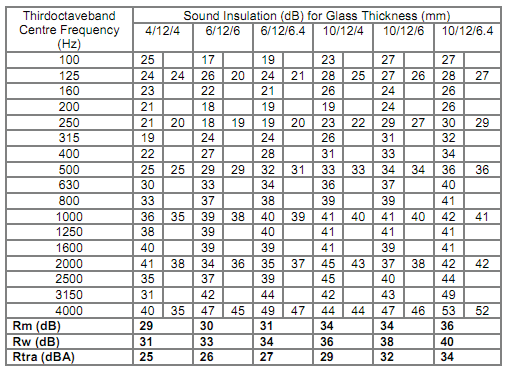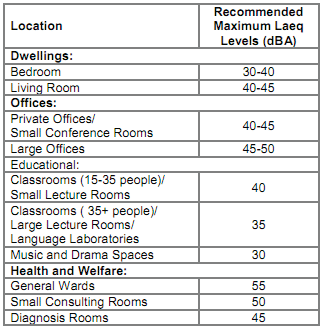Sound Insulation
Acoustic Insulation
"Acoustically insulating glazing can help keep noise outside so you can enjoy your living space in peace and quiet."
- Ryszard Borys
Noise pollution is a serious issue, particularly when living in an area with high levels of air traffic or busy roads. Too much noise can be damaging to health by increasing stress and disrupting sleep. It can also hinder academic learning, productivity when working from home, and concentration.
How does it work?
Noise levels are measured in decibels (dB). A comfortable sound level is around 35dB in daytime and 30dB at night. Acoustically insulating glass cuts out excess sound and the harmful effects of noise and is particularly effective in buildings near to high streets, urban traffic, motorways, train stations and airports. The acoustic glass within a double-glazed unit comprises a special interlayer which acts as a dampening core to prevent sound frequencies from vibrating from one pane of glass to the other. This absorbs and weakens sound energy, helping to act as a barrier to noise.This plastic interlayer also has the additional safety and security properties of laminated glass (see “safety and security glass” section).
WHAT ARE THE BENEFITS?
Your home should be a place where you can shut out the world and escape the pressures of your working day. By fitting acoustic windows you can keep noise at bay and enjoy your surroundings in peace and quiet.
- Acoustic glazing forms an effective barrier to external noise allowing you to sleep restfully in a tranquil environment.
- You can enjoy your home at a sensible noise level so you can relax and unwind without additional stress.
- Your family can study and concentrate without the distraction of excessive noise.
- Reduce impact noise, particularly on conservatory roofs when it is raining.
Acoustic glass can be combined with many other products for multi-functional glazing, such as thermal insulation, solar control, low-maintenance and decorative glass.
Insulating glass units were originally introduced to reduce heat loss through windows. However, by judicious design, it is possible also to achieve moderately high acoustic insulation. The main principles to employ are the use of thick glass, and ensuring that the component glasses differ in thickness by at least 30 percent (e.g. 10mm + 6mm or 6mm + 4mm) in order to offset individual resonances (suppress sympathetic resonances).
The lamination of one pane produces a further small improvement, and this is achieved regardless of which glass is laminated.
Effect of the cavity width Over the usual cavity width range of 6mm to 20mm for insulating units, there is little variation in acoustic performance although there is a more significant change in thermal insulation. This acoustic performance plateau is due to the relatively strong coupling of the glass component glasses. The associated data presented in the table below relates specifically to insulating units with standard 12mm air filled cavities, but negligible error is introduced if these values are adopted for all cavities within the above range.
Acoustic Indices
RM - MEAN REDUCTION
The complete way of specifying the acoustic performance of glazing, (or any other building element), is to establish its sound insulation over a wide range of frequency range is 100-3150 Hz in which case the corresponding sound insulation value, (or Sound Reduction Index, SRI), should be determined at all the 16 thirdoctavebands between 100-3150 H
The arithmetic mean, or average, of these insulation values is a simple indicator of performance, designate Rm, or Mean Sound Reduction Index, and is measured in dB.

RW - WEIGHTED REDUCTION
Rm is now less used since the publication of BS 5821: 1984, in which the index, Rw (weighted reduction) is defined, which incorporates a correction for the ear’s response. It is derived from comparing the window sound insulation/frequency curve with a family of reference curves and selecting one to obtain the ‘best fit’ so that its average adverse deviation over the 16 thirdoctavebands between 100-3150 Hz is only 2dB. The corresponding sound insulation of this reference at 500 Hz then defines the Rw index of the window. Numerically, it may be up to 5dB higher than the corresponding Rm value for the same window data. Hence, it is more important to differentiate between these indices.RTRA - TRAFFIC NOISE REDUCTION
Neither Rm or Rw can be used directly to estimate interior noise levels because of their independence of the spectrum of the actual noise climate. By adopting an idealised, but typical, spectrum of road traffic noise in town and city centres, the index Rtra (reduction of road traffic noise) can be derived, by processing this with the basic sound insulation of the window, frequency-by-frequency. This represents the attenuation, in dBA, which the window can achieve in mitigating road traffic noise and gives a very useful guide to in-service performance.STC - SOUND TRANSMISSION CLASS
Occasionally, requirements may be stated, in terms of Sound Transmission Class (STC) values, which is the American Standard ASTM E413. Its dervation is similar to the Rw index, except that the relevant frequency is range is 125-4000 Hz )i.e. shifted upwards by 1/3 octave from the British Standard). For this reason STC is, typically, around 1dB higher then its equivalent, owing to panel materials (including glass) being generally better performance at high frequencies.RECOMMENDED INTERIOR NOISE LEVEL
The table below is compiled from typical values contained in BS 8233: 1987. The original document should be consulted for guidance on less common noise exposures.
